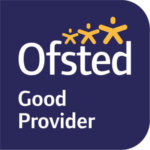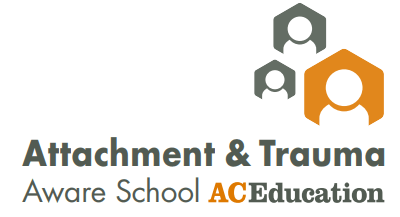At St Catherine’s our KS2 Classrooms and learning culture looks very different from the traditional approach most schools have. We believe our approach maximises the opportunities for all our children to feel safe, comfortable and ready to learn so they can achieve their full potential.
Furniture Layout
Using Educationalist Stephen Heppell’s approach to learning environments, our endeavour is to provide children with a personalised learning experience. In 2012 the children in KS2 met with the Senior Leadership Team and the governors to discuss what helped them to feel comfortable when learning in the classroom. They contributed to the design of the learning environment including the type of furniture they wanted to have in two classrooms where in specific lessons the children can choose what area they want to carry out their learning activity. A feature of the classrooms are the high tables and chairs along with brightly coloured soft stools and group seating which provides children with breakout spaces, spaces for focus, areas for collaboration, for serious study and focused conversations as well as areas for peace and quiet. This allows the children to learn in a larger, free flow space between two classrooms and develop independence in their learning whilst providing an eye line for the adults in the room to monitor learning and engagement. Our furniture is laid out in order to maximise learning potential using a range of possible configurations
The learning environment enables all learners to
- maximise the space available for effective teaching and learning
- enable children to gain access to resources efficiently and safely
- optimise learning by offering the most suitable group configuration
- allow people to move through the classroom safely
Shoeless Learning
In Key Stage 2 children remove their shoes when entering the classroom for shoeless learning. This strategy encourages better learning and better behaviour. Noise is reduced creating a calmer learning atmosphere where children are more likely to move gently throughout the classroom. Children are more receptive to learning as they are comfortable with this “more like home” effect and are more willing to curl up with a book to read or stretch out and write or research on the I pad, rather than sit upright in a hard chair.
Tiered Seating
Tiered seating provides children with the opportunity to come together comfortably as a group. This enables children to be heard by everyone in the room. By allowing children to come together and sit close in front of the teacher or whoever is presenting, an intimate space is provided where voices are not raised and eye contact can be made.
The layout is arranged to
- enable each child to see and be seen comfortably by the teacher
- allow children to work with adequate space
- allow children to move around the classroom without disturbing other children
- allow the teacher to gain adequate access to all children
Bumbags and Resources
As children will move around the classroom for each learning activity they need to have their resources with them. All children are provided with a bum bag when they begin Year 3 which they wear all day in the classroom. It contains the pens, pencils, glue sticks, rulers and erasers they will need for their learning. The children are responsible for looking after their own resources which develops their independence. There are no pencil cases and pencil pots at St Catherine’s. The bumbags ensure the children are fully equipped and ready to learn wherever they choose to sit in the classroom.
No hands Up
In KS1 and KS2 we want our children to be active listeners in all lessons and be ready to share their understanding with others. When asking questions to the whole class the teacher will use a randomiser on the c touch or simply take one of the 30 named lolly sticks out of a cup and invite a child to answer the question showing the teacher and the class their understanding. This approach ensures children are focussed and engaged in lessons.
Talk Partners
When children are asked a question, sometimes they may not be able to think of an answer or may even feel shy to respond. They are then invited to discuss a possible response with their talk partner which they can share together. Every child in KS1 and KS2 is provided with a talk partner each week, whom they learn with for all activities. We believe if children have the opportunity to discuss their thoughts and understanding with a partner they are able to articulate their response clearly in front of the class and are more likely to write it too, having organised their thoughts. A talk partner is there to listen and support. At the end of the week each child evaluates their talk partner, providing them with advice on what went well for example find they look at their partner when they were speaking and/or did they listen carefully as well as providing areas of improvement in the form of an even better if suggestion! The children will then move on to a new talk partner the following week. This supports the children in developing an understanding and appreciation of different personalities as well as building resilience to work with personalities they may find difficult.
Outside Learning
Outside learning is not just a feature in the Early Years. All classrooms have access to an outside area where children can carry out activities on a larger scale. This is particularly effective for the kinaesthetic learner and those who require motor skills development. Activities provided in the classroom are mirrored as far as possible outside on a larger scale.
We believe a classroom of the 21st Century should have:-
- Adaptable furniture – classrooms that move and change as the children prefer – classrooms that feel spacious and inviting. Different areas for children to learn in – ‘rooms within rooms’ i.e. quiet spaces – areas to go to when you’re stuck, areas to collaborate etc.
- Technology integrated into the classroom and all curriculum areas – no more ‘ICT suite’. It’s always ICT time! Lap tops and I-Pads
- Team Teaching – sharing and using expertise. Using the children and all staff. Being able to support all learners at all times. Sharing and using the different areas of the learning environment.
- The teachers as facilitators. Modern realisation of best practice in education no longer supports the idea of the teacher as an authoritarian figure standing in the front of the room scrawling on a board. As educators, our role can be reshaped so that we work beside students providing knowledge, intervention, challenge, support and encouragement.
- Children able to choose areas which they will work effectively in for different activities.



